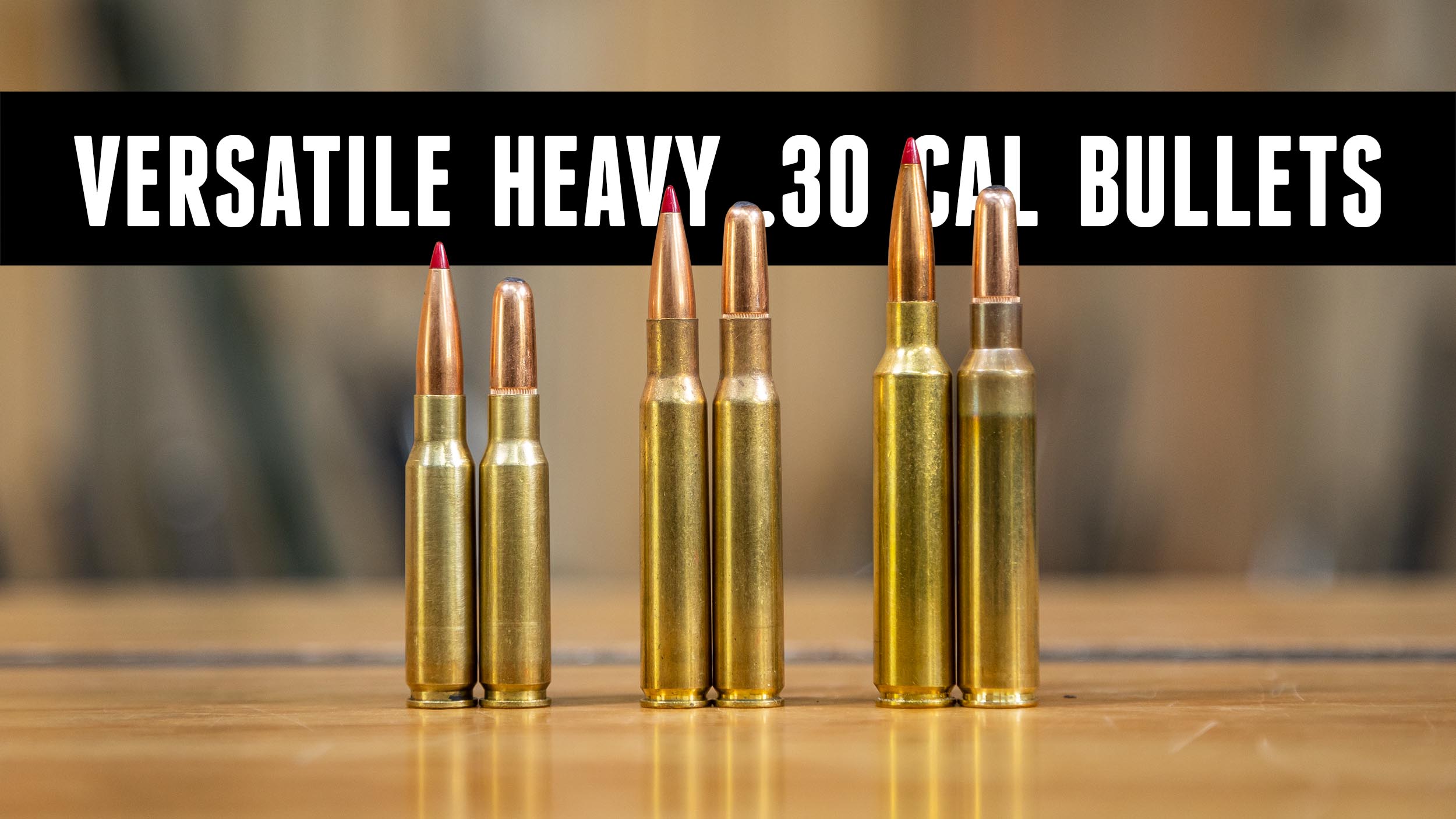Heavy .30 caliber bullets aren’t new for big game, but now there are high BC options! Which is better?
Disclaimer
Ultimate Reloader LLC / Making with Metal Disclaimer: (by reading this article and/or watching video content you accept these terms). The content on this website (including videos, articles, ammunition reloading data, technical articles, gunsmithing and other information) is for demonstration purposes only. Do not attempt any of the processes or procedures shown or described on this website. All gunsmithing procedures should be carried out by a qualified and licensed gunsmith at their own risk. Do not attempt to repair or modify any firearms based on information on this website. Ultimate Reloader, LLC and Making With Metal can not be held liable for property or personal damage due to viewers/readers of this website performing activities, procedures, techniques, or practices described in whole or part on this website. By accepting these terms, you agree that you alone are solely responsible for your own safety and property as it pertains to activities, procedures, techniques, or practices described in whole or part on this website.
Why Heavy Bullets?
In 2017, I turned to my .30-06 and handloaded 200 grain soft point bullets for a Brooks Range Grizzly hunt on the recommendation of my outfitter/guide, Lyle Becker (Alaska Skookum Guides). His guidance was based both on the on-game performance he’d seen with heavy 30 caliber bullets and the knowledge we might need to shoot out to 300 yards in the rather open country of the Brooks Range. Heavy bullets have been killing game far longer than I have.
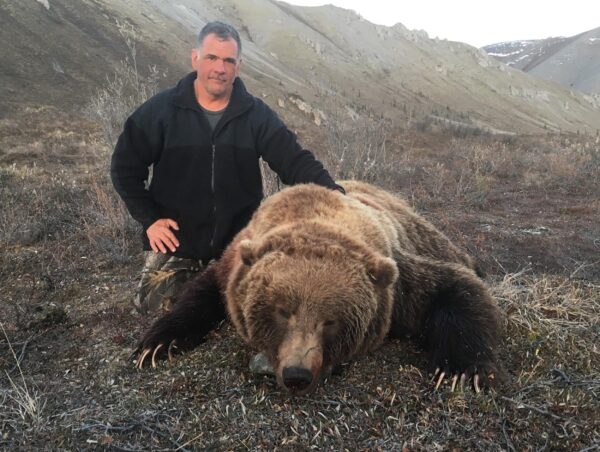
The 220 grain 30 caliber bullet actually predates the popular .30-06 cartridge! It was used in the .30-40 Krag, also known as the .30 Government, then in the .30-03, and eventually in the .30-06 and most of the 30 caliber magnums.
Many hunters relied on 220 grain bullets and the .30-06 for big game such as Alaskan brown bear/grizzly, moose, elk, and even more exotic creatures like the African Cape Buffalo and rhino!
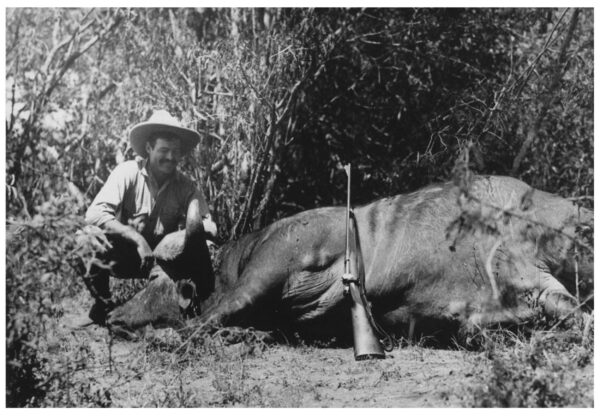
Theodore Roosevelt and Ernest Hemingway both used 220 grain bullets in their .30-06 rifles on very large and dangerous game even though they had much larger, more powerful rifles with them. These heavy, old-style bullets became well known for their deep penetration on large, tough animals.
About the Bullets
We chose two very different 200+ grain Hornady hunting bullets for this project.
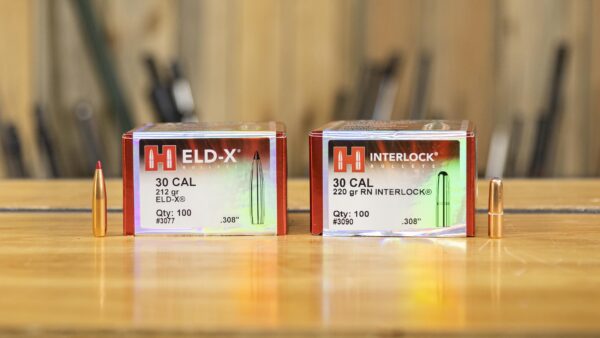
The 220 grain Hornady Interlock Round Nose Soft Point is a revered bullet for hunting big game and Hornady even rates it for use on dangerous game. It has a long history of performing well on large game species. It was never intended as a long range bullet, designed for good performance on heavy game at modest range. It requires a 1:10 twist and has a .300 G1 BC.
From Hornady:
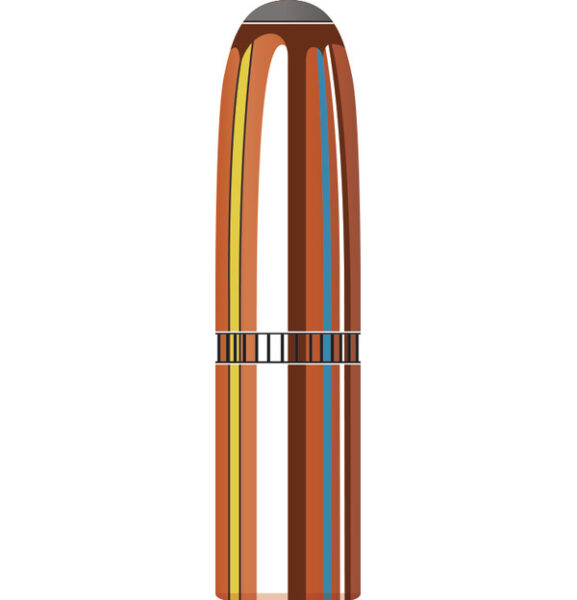
Our traditional line of bullets feature exposed lead tips for controlled expansion and hard-hitting terminal performance. Most have our pioneering secant ogive design — one of the most ballistically efficient profiles ever developed (see diagram to right). Most feature our exclusive InterLock® design — a raised ring inside the jacket that is embedded in the bullet’s core that keeps the core and jacket locked together during expansion to retain mass and energy.
Hornady’s 212 grain ELD-X impressed me! It’s a much newer, very long bullet with a high ballistic coefficient, yet it can still be properly stabilized in a standard 1:10 twist, which is central to most 30-06 and 30 caliber magnums. It has a .663 G1 BC and .334 G7 BC. A friend, Scotty B., told me that he’d used it on elk with excellent results and urged me to try it as well. Gavin used this bullet a few years ago with his 300 PRC rifle on mule deer. Of course it performed well! This bullet is rated by Hornady for large game up to 1,500 pounds. As we’ll see later, it retains velocity extremely well at longer ranges. I’ve used a lighter, 178 grain ELD-X from my 30-06 with good results on elk, and have often wondered about using the longer, heavier 212 grain version.
From Hornady:
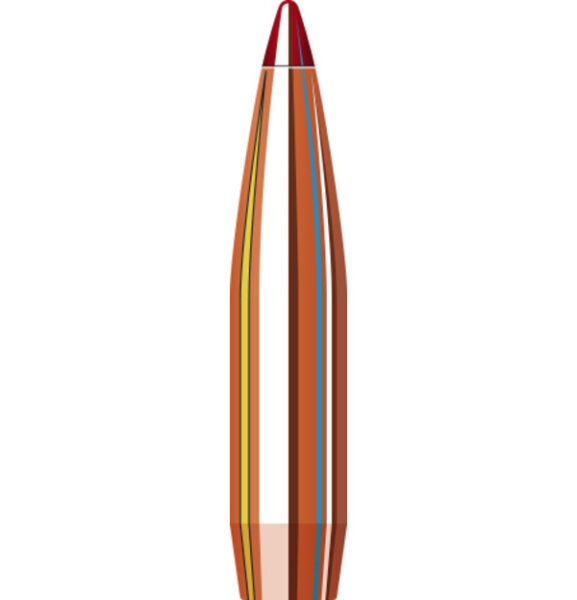
The ELD-X® (Extremely Low Drag – eXpanding) bullet is a technologically advanced, match accurate, ALL-RANGE hunting bullet featuring highest-in-class ballistic coefficients and consistent, controlled expansion at ALL practical hunting distances.
About the Rifles
For this exercise, we used our .308 Shorty build with 16.25” barrel, .30-06 Springfield Sporter with a 22” barrel, and Gavin’s custom .300 PRC with 26” barrel.
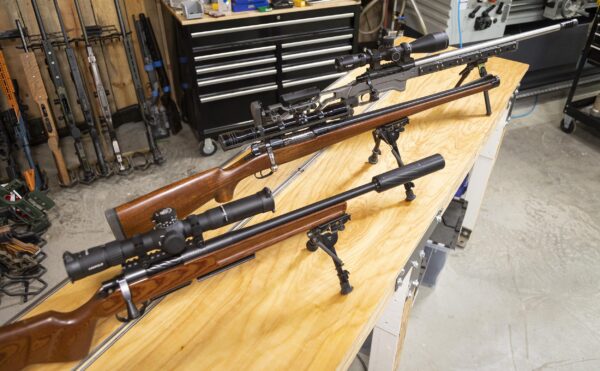
I’ve become a big fan of our .308 Shorty, built on a BAT action in a Foundation Dominion stock.
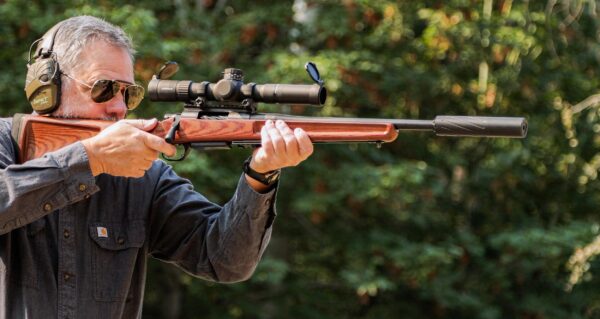
My Springfield Sporter rifle is a family heirloom. My grandfather customized it for my dad in the 1940s while he was still in the Navy.
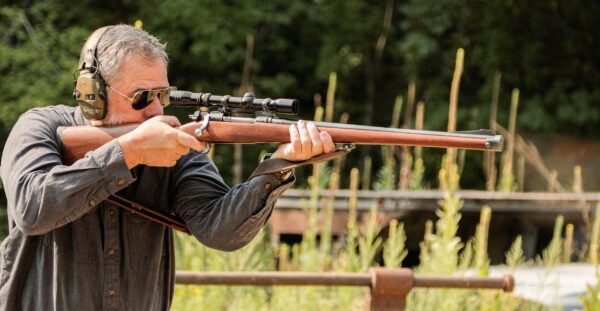
Gavin’s .300 PRC is a heavy rifle made for long range precision shots. I’m not generally a fan of heavy rifles as I prefer lightweight options for hunting, but the extra weight is nice to dampen the recoil in a magnum.
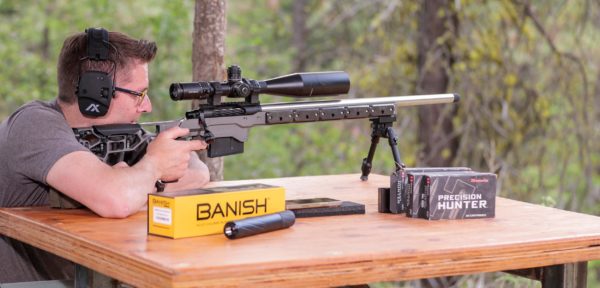
About Our Loads
We compared three different 30 caliber cartridges at three distinctly different power and velocity levels with both Hornady bullets.
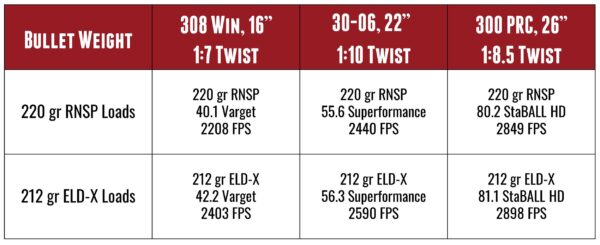
The .308 Winchester ran the 220 grain bullet at about 2200 fps, and the 212 at about 2400 fps. As a side note, Hornady recommends the 212 grain ELD-X bullet be loaded to 3.00” in the 308 Winchester. This is very long for the .308, and may preclude it from working in most factory short action magazines.
The .30-06 ran the same bullets about 200 fps faster in both cases, partially due to a much longer barrel.
The .300 PRC added even more velocity with 2849 fps from the 220 and nearly 2900 fps from the 212 grain ELD-X. These velocities can also be achieved by the popular 300 Winchester Magnum.
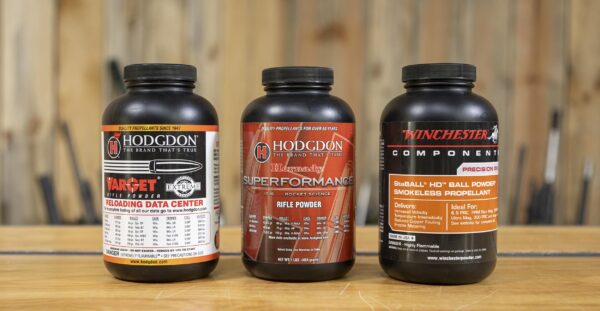
To no one’s surprise, the .308 performed well with Varget. After looking over Hodgdon’s data, I selected Superformance for the .30-06 loads and the new StaBALL HD powder for the 300 PRC. We used standard CCI 200 large rifle primers in the .308 and the .30-06 with Federal 215 magnum primers in the .300 PRC.
About Clear Ballistics Gel
We use Clear Ballistics Gel to determine bullet expansion and penetration. While synthetic ballistics gelatin will not 100% reflect what a bullet will do to a human or animal, it provides us with valuable data and allows us to compare the performance of different bullets and different loads.
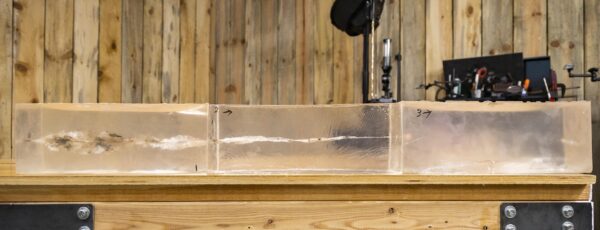
American-made Clear Ballistics Gel is reusable. It can be melted down and utilized again for even more tests. Consult ClearBallistics.com to view all of their offerings!
Chrono Data, Trajectory and Accuracy
Let’s start with the least powerful of these three cartridges, the .308 Winchester. Both Hornady bullets are quite heavy for the .308 Winchester. Normal hunting loads for this cartridge have 150-180 grain bullets, and more recently, some excellent 125 and 130 grain .30 caliber hunting bullets have been introduced. Many .308 Winchester rifles, such as mine, have a 1:12 twist barrel, which is unlikely to be able to stabilize the long 212 grain ELD-X.
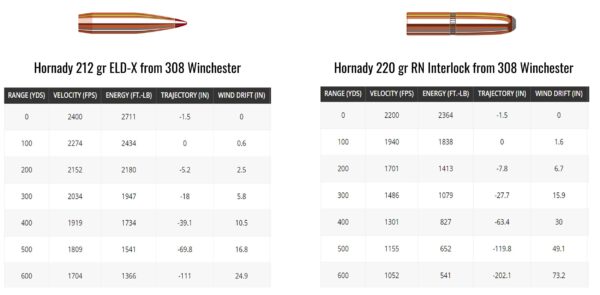
It’s also important to note the wind drift on these bullets. The 220 grain RNSP slows down much more quickly than the 212 grain ELD-X, which is where the high BC of the ELD-X comes into play. The 220 grain RNSP was only designed for short distances, but it’s still interesting to note the drop comparisons at 600 yards and 1000 yards.
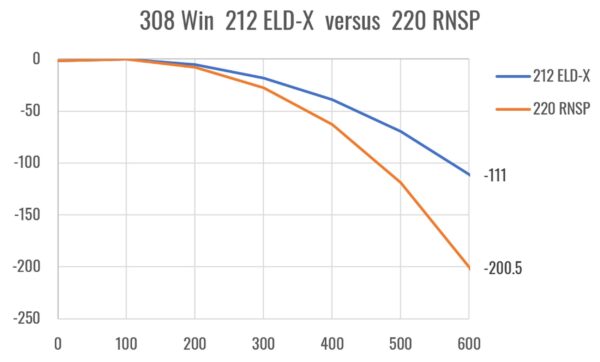
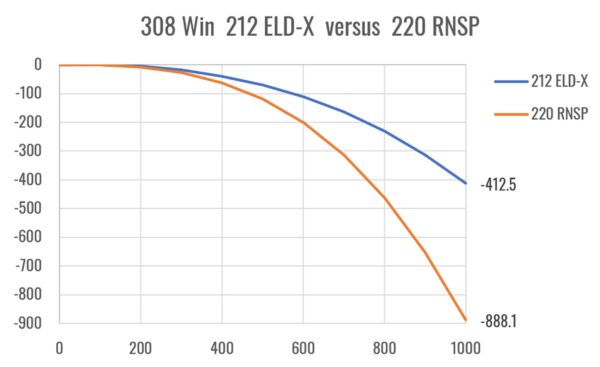
Going up a step to the .30-06, we noted the bigger case handled these heavy bullets well. This was no surprise as .30 caliber 200+ grain bullets have always been available in commercial loads for the 100+ year old cartridge.
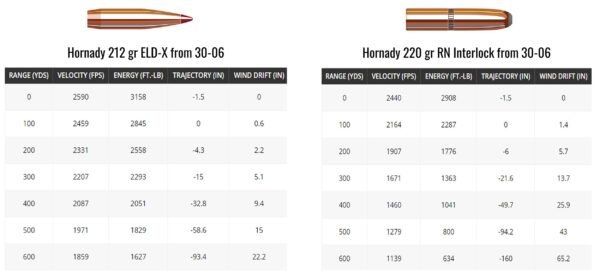
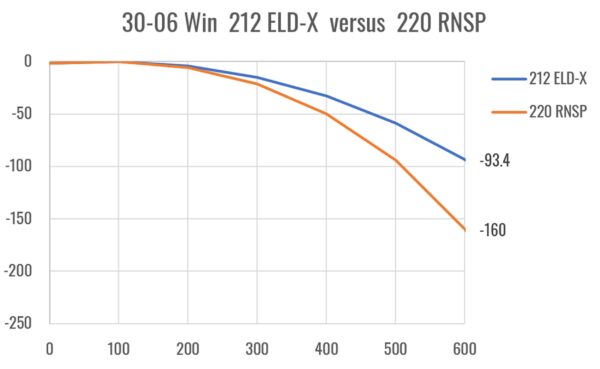
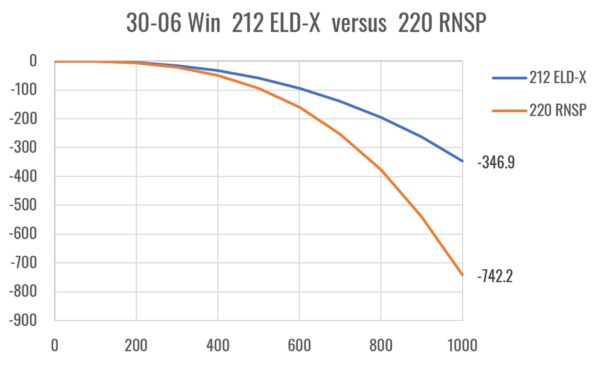
When we get to the .300 PRC and .300 Win Mag level, we’re using a lot of slow-burning powder that can move each of these bullets over 2800 fps, even into the 2900 fps range! That’s a lot of velocity from such heavy .30 caliber bullets.
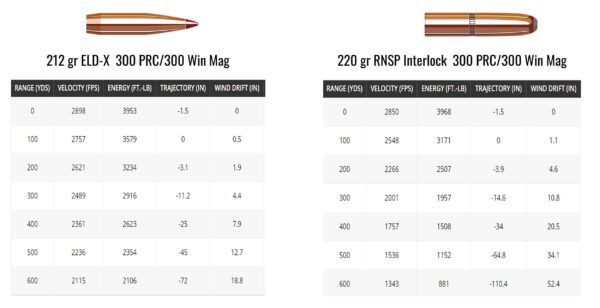
The 212 grain ELD-X truly shines downrange when driven at such a high muzzle velocity. At 600 yards, it’s still traveling faster than many of my 30-30 loads at the muzzle!
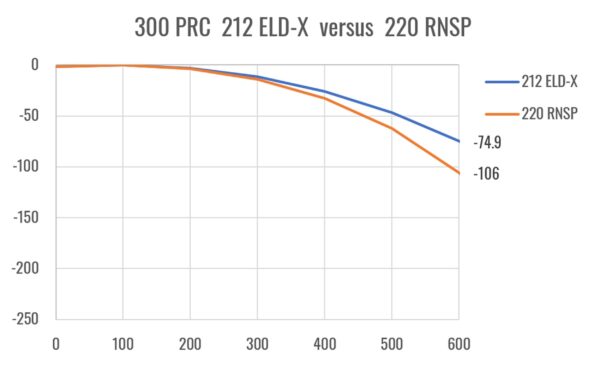
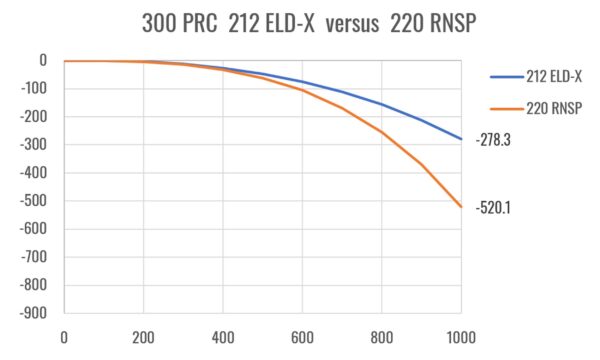
From each cartridge, the 212 grain ELD-X easily outperforms the 220 grain Round Nose bullet in retained velocity and energy, bullet drop, and wind drift. It was designed to excel in those areas and does so. This kind of performance should endear it to long-range/precision hunters who make long open-country or cross-canyon shots.
The 220 grain Round Nose is well-suited for shorter range hunting, such as hunting bull elk in the dark timber, bull moose in the willows, or big bears in places where the ranges may be short. A deep-penetrating bullet is more likely to reach the vital area with shots from less than perfect angles or when encountering thick hide, big bones, and heavy muscle.
Gel Block Results
We decided to test the two different bullets in the Clear Ballistics Gel blocks for penetration and expansion. I tested them at low velocity to simulate a long range impact.
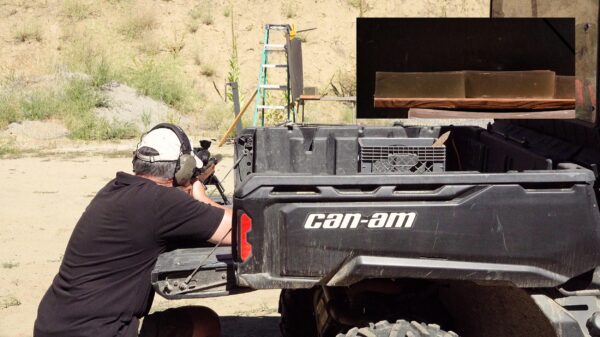
From most hunting cartridges, I’m happiest to see an impact velocity of 2,000+ fps for good expansion. Some hunting bullets are rated to expand at 1800 fps, 1600 fps or perhaps even lower, but I’ve always noted decent expansion and penetration on game when my hunting bullets have impacted at 2,000 fps or more.
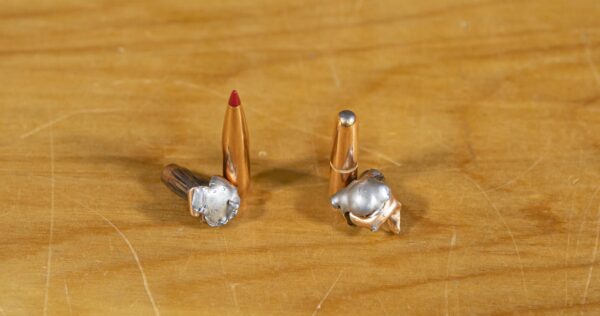
For this article I loaded both bullets to about 1540 – 1580 fps from the .308 Winchester to emulate a downrange impact velocity. This equates to approximately:
.308 Winchester 212 gr ELD-X, 700 yards 220 gr RNSP, less than 300 yards
.30-06 212 gr ELD-X, 900 yards 220 gr RNSP, less than 350 yards
.300 PRC 212 gr ELD-X, 1100 yards 220 gr RNSP, 500 yards
The long range difference between the performance of the 212 gr ELD-X and the traditional 220 gr RNSP from any of the cartridges is profound.
To accomplish this, I loaded both bullets in .308 cases and used minimum or near minimum loads of Hodgdon’s Varget. This resulted in the 212 ELD-X having a muzzle velocity of only 1543 fps, and the 220 gr RN bullet moving at a similar 1578 fps.
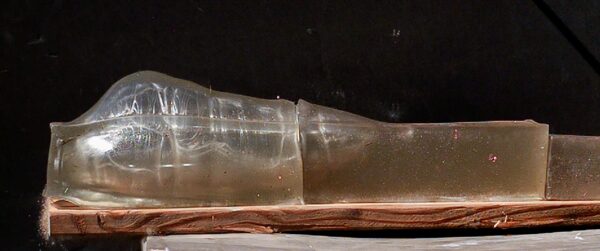
The 212 grain ELD-X had 23.5” of penetration, the bullet retained 193.7 grains (91%, 0.633” diameter). The 1543 fps approximates the velocity of the bullet at 700 yards when fired at 2400 fps from a .308 Winchester.
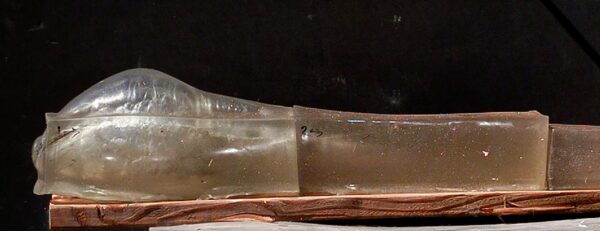
The 220 grain RNSP had 24.5” of penetration and retained 172.5 grains (78%, 0.692” diameter).The 1578 fps approximates the impact velocity of the bullet at 250 yards when fired at 2200 fps from a .308 Winchester.
Conclusion
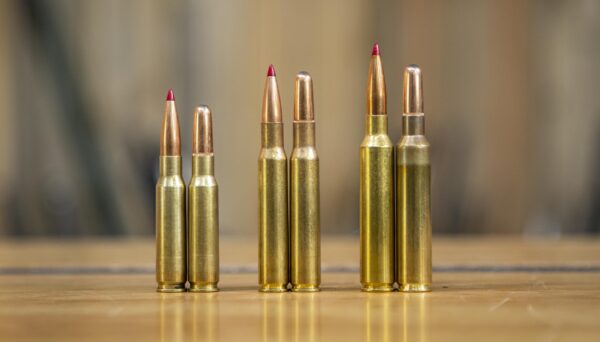
This experiment proved that BC matters! The further your shot, the more critical it is.
I’m very glad that I used quality 200 grain bullets for my grizzly hunt. I know that if I ever draw that coveted bull moose tag, I’m likely to opt for a heavy .30 caliber hunting bullet.
My largest elk was taken long ago using a heavy 175 grain bullet from a 7mm Remington Magnum. Performance was superb. The long and heavy .30 caliber bullets offer more of the same kind of performance.
With great performance spanning over a century, heavy .30 cal bullets are here to stay.
Get the Gear
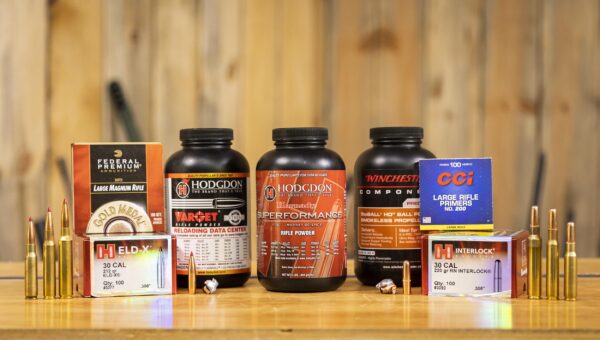
Hornady .30 Cal .308 212 gr ELD-X® at Midsouth Shooters Supply
Hornady .30 Cal .308 220 gr InterLock® RN at Midsouth Shooters Supply
Hodgdon VARGET® at Midsouth Shooters Supply
Hodgdon Superformance® at Midsouth Shooters Supply
Winchester StaBALL HD at Midsouth Shooters Supply
Federal Gold Medal Magnum Large Rifle Match Primers
Hornady .308 Winchester Match Grade Unprimed Rifle Brass
Hornady .30-06 Springfield Unprimed Rifle Brass
Hornady .300 PRC Hornady Unprimed Rifle Brass
Don’t miss out on Ultimate Reloader updates, make sure you’re subscribed!
Thanks,
Guy Miner
